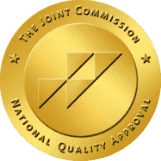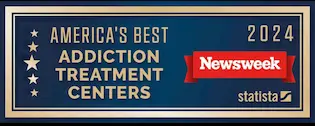Does 30 Day Rehab Work?
- Home
- Does 30 Day Rehab Work?
What is Rehabilitation?
Rehabilitation is a type of treatment that follows an injury or illness. The World Health Organization defines rehabilitation as a set of interventions designed to improve functioning and help people live normal healthy lives. For substance abuse, this means helping people safely detox from any drugs and then utilizing therapy, medication, or other practices to help them stay sober.1
How Long is Rehab?
Rehabilitation can be a time-consuming process. For addiction recovery, rehab can last anywhere from a few weeks up to a year. It can be difficult to pinpoint exactly how long someone will need to be in rehab, as everyone’s needs in recovery are different. While some individuals may need to stay for a full year, others can benefit from just a short 30 day rehab stay.2
30 Day Rehab
How Does 30 Day Rehab Work?
What Happens In 30 Day Rehab?
Therapies Included In Rehabilitation
Treatment consists of a few different types of therapy. The most common is cognitive-behavioral therapy, which helps address the “why” behind addiction. Contingency management is also used to help create new healthy behavioral patterns through positive reinforcement. Also, pharmacotherapy is used in short-term rehab. By using medication, withdrawal symptoms and cravings can be minimized.3
Other Treatment Methods
Are 30 Days in Rehab Enough?
What Does a Rehabilitation Service Do?
Addiction Rehabilitation Goals and Benefits
There are three main goals of addiction rehabilitation, which are to reduce substance use and eventually live a substance-free life, improve life functioning and overall well-being, and to reduce the frequency and severity of relapse. These goals can be incredibly difficult to meet without help when in active addiction.
The benefit of working with a rehab center is that they can help you create an effective treatment plan that works for you.
When is Rehab Needed?
It can be difficult to tell if someone is struggling with addiction and needs help. Around fifteen million adults in the US need addiction rehabilitation treatment at some point in their lives. Signs that someone may be reliant on substances and could need rehab include an increase in use, changes in behavior, and withdrawal symptoms when trying to quit.4
Who Needs Rehabilitation?
For individuals dependent on drugs, rehabilitation is almost always necessary, as quitting drug use on one’s own can be incredibly dangerous. When someone stops using an addictive substance, withdrawal symptoms set in.
These symptoms range in severity and can even be fatal in some cases. Not only does rehab help manage these symptoms, but it also provides the tools needed to stay sober after treatment ends.5
What Happens After 30 Day Rehab?
Aftercare Programs
Support Groups
Find 30 Day Rehab with Iris Healing®
Inpatient Care
Our 30 day inpatient services are the most intense level of care offered at Iris Healing®. The key focus of this type of program is stabilization and relapse prevention. During an inpatient stay, individuals receive 24/7 supervision to manage symptoms and provide support.
After a 30 day inpatient stay, individuals can either transition into residential treatment or outpatient. Residential treatment is less intense and is longer in length. Residential treatment includes more therapy and skills training, as well as therapeutic activities for wellness.
Outpatient Care
Outpatient care is less intense than residential or inpatient, and it is often considered “step-down” care from these other two interventions. For those who have completed inpatient and residential treatment, outpatient care is a great option to stay on track with recovery.
Outpatient treatment is also a great idea for those who cannot do an inpatient or residential stay. This type of treatment consists of regular check-ins, support groups, and therapy. Medication can also be a part of outpatient treatment.
Aftercare
Why Choose Us?
With hundreds of rehabilitation centers in the Los Angeles area alone, it can be difficult to choose a good rehab program. Iris Healing® provides a spiritually-minded healing retreat complete with everything you need to address your addiction. We also take a holistic approach to treatment, which means that we treat the whole person and tend to physical, emotional, and spiritual wellness.
Our treatment programs are tailored to your unique needs and include activities such as animal therapy, yoga, sound therapy, as well as other traditional therapies. Contact us today and start your journey to a substance free life.
Conclusion
Overall, 12 step programs can be beneficial for someone struggling with addiction. They can provide support and structure. There are also alternatives to the traditional 12 step program, as well as programs that can help those who have been affected by addiction in loved ones.
If you or someone you know is struggling, there are resources available to get the help you need. You can call Iris Healing® to start today.
Iris Healing® strives to be diligent and prompt in updating the information available on our website. Please note, however, that our treatment modalities and protocols are subject to change at any time. For the most up-to-date details regarding our treatment offerings or other protocols, please contact us: (844)663-4747



